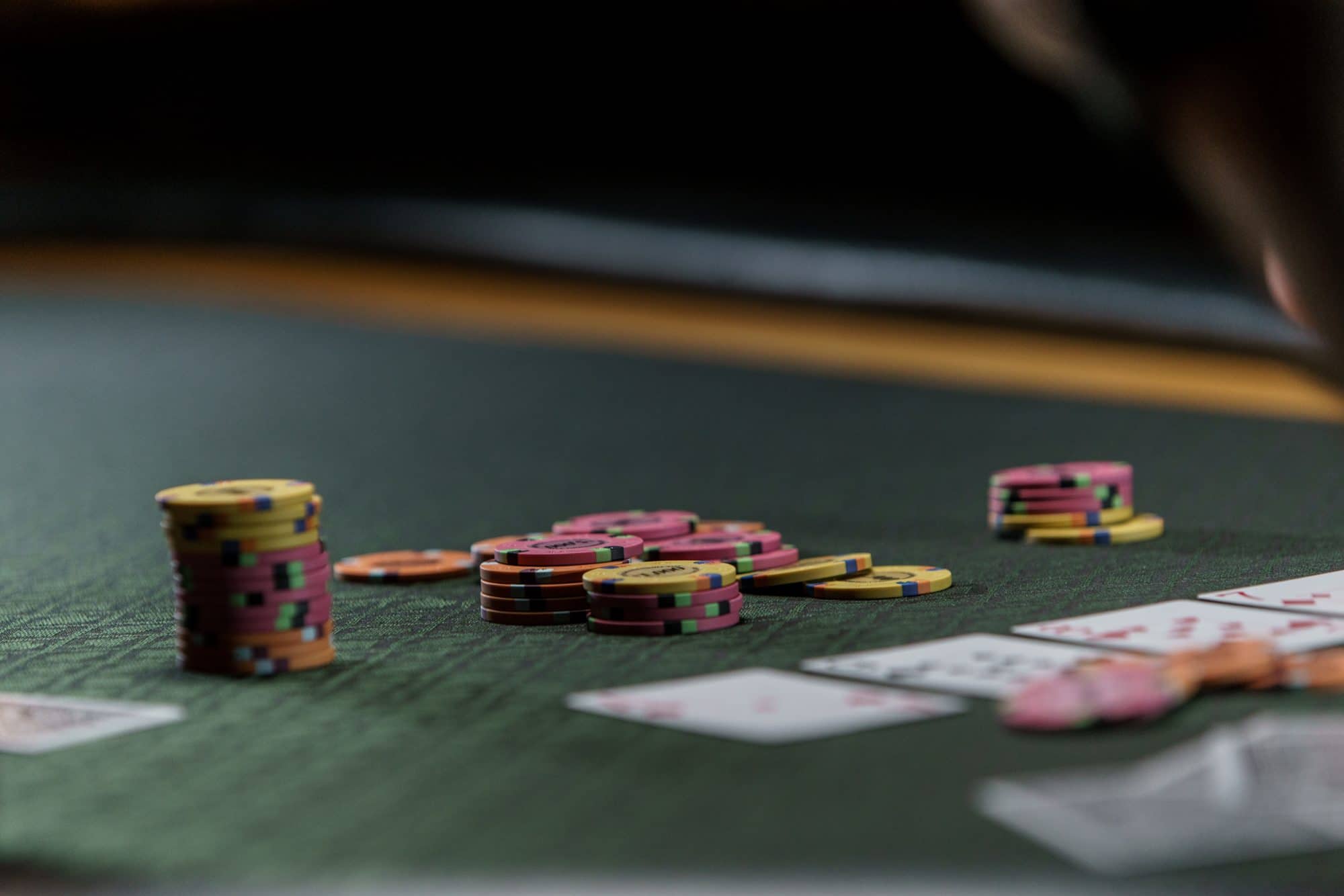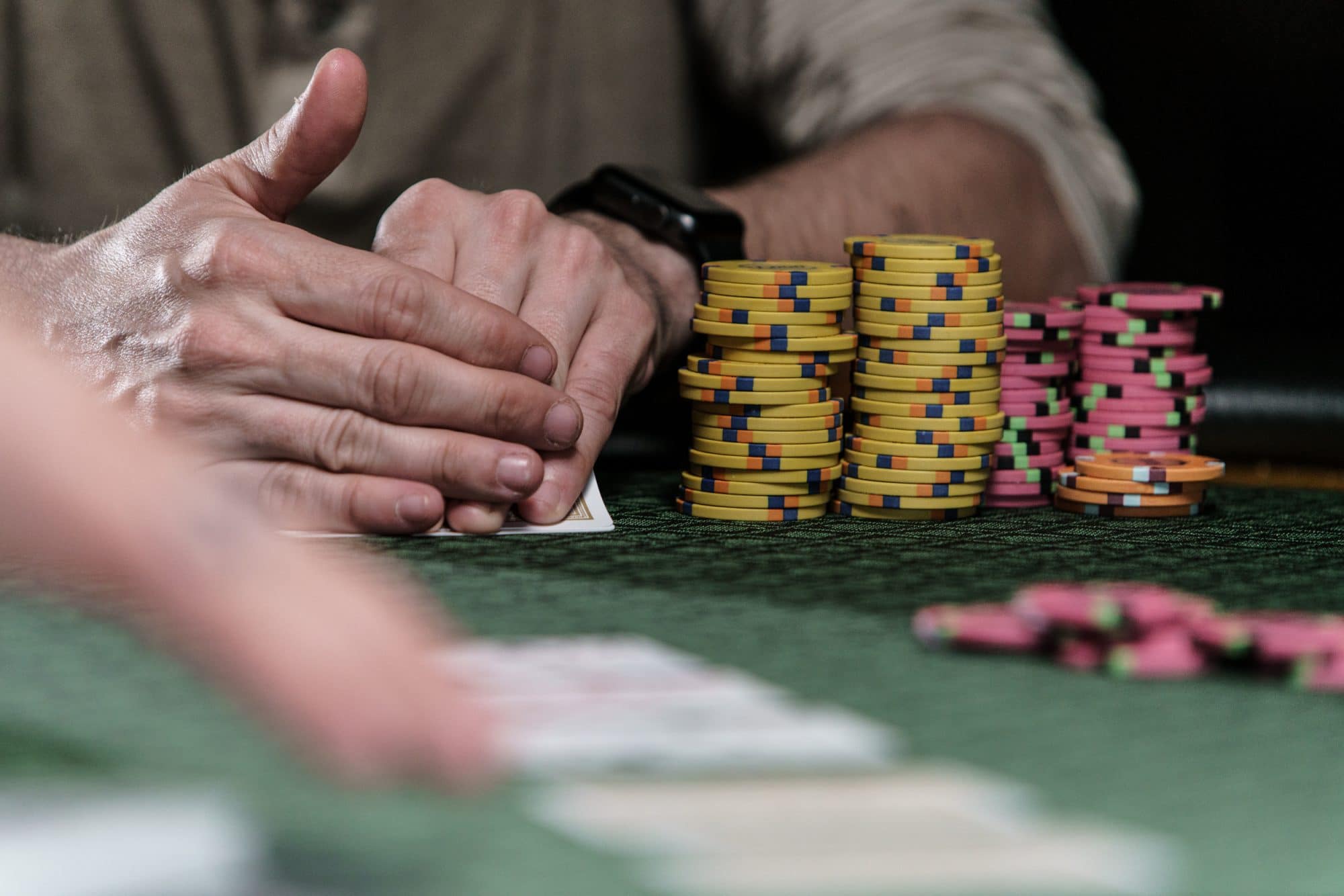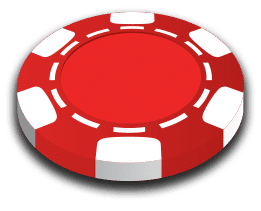In this final part of my introductory tournament series, I’m going to break from educational convention and begin by telling you what I’m not going to talk about. I’m not touching re-entry tournaments for the simple reason that, these days, nearly every tournament allows re-entries. The only tactical decision that comes to mind with these things is whether one should join one immediately before the re-entry period ends if it looks like there will be an overlay. I’ve played this game of chicken on The Strip occasionally, but honestly have never broken down the various factors of when it’s advisable. Those factors include the size of the overlay, the number of big blinds you’ll have, and the average stack. If this interests you, I encourage you to do the work and report back on the RCP Discord server.

I’m also going to skip bounty tournaments, again because I rarely play them and have not analyzed the mathematics. From general principles, it’s apparent that there are likely to be merits in a more aggressive early approach, since covering other stacks means that in an all-in confrontation you will be the player able to win the bounty. The added equity provided by a bounty must also expand all-in calling ranges somewhat. However, the degree of the adjustments will depend on the size of the bounty relative to the buy-in. Again, feel free to explore this topic and I am sure our community will thank you for your results in the forums. For PRO members we have a video by Gareth James that addresses the key issues, along with a follow-up video, as well as detailed material on progressive bounty tournaments (PKOs).
Rebuy And Re-Entry Tournaments
Let’s first be clear on the critical difference between a true rebuy and the far more common re-entry tournament. In the latter, if you bust out during the re-entry period you have the opportunity to rejoin the tournament as a completely new entry. In all but poorly run two-table affairs, this will mean you get a new stack of starting chips and a new seat assignment. In some live tournaments you may be put on the end of an alternate list before you can rejoin the action.
In a true rebuy tournament, you can frequently buy more chips as soon as you are seated or once your stack has dipped below some predetermined amount. If you get stacked you can immediately make a full rebuy (sometimes, particularly in online tournaments, a double rebuy). Critically, you stay in the same seat.
Why is this so important? With the rare exception of a table break down coinciding with your rebuy, the fact that rebuying players stay put means that every rebuy adds chips to that table. At a wild table in which there are many all-in confrontations and rebuys, the stacks inevitably become much larger than those at a more passive, conservative table. Once the rebuy period ends, this confers a huge advantage upon players with the largest stacks on those active tables.
If you’ve watched a lot of the early WSOP footage from the Rio, you’ve likely seen well-known pros yelling for rebuy after rebuy in $1k events. In some cases there is probably an element of personal brand building involved – some of those guys really love the TV cameras – but there is a solid theoretical foundation to the behavior. When rebuys became common online, people soon cottoned on to the tactic and it led to some hugely entertaining play.
There are some downsides, or at least some degree of balance is required. I remember around 2005 trying an ultra-aggressive version of this strategy, in which anything suited is a preflop shove even around 100bb deep, with both cards being 9 or higher being a more than adequate criterion for offsuit stuff. Since I am not completely nuts, I decided a generic $1 rebuy on Stars was a sensible proving ground. I ended up rather overdoing things, finding that once the rebuy period had ended I needed to final table the 150-player field to break even. The fact I did doesn’t detract from the fact I’d gotten a bit carried away with the experiment.
Online Rebuy Poker Tournaments
While you’ll still occasionally come across a live rebuy tournament, they are far more common online. My own access to online poker is somewhat restricted due to living in Nevada, but on WSOP.com at least, the ultra-aggressive rebuy strategy seems dead. Ironically, I suspect the main reason for this is that the re-entry period coincides with the rebuy period. What this means is that there is a greatly increased probability that players get moved from their starting tables as new tables are added and balanced. As explained above, the whole purpose of the strategy is to accumulate chips on your table. There is simply no incentive to do so if there’s a possibility you’ll be unceremoniously zapped from it.
Most online rebuys allow you to double your starting stack before a hand is dealt by immediately rebuying. This raises the question of whether players should avail themselves of this opportunity. If the additional chips are rake free or in some other way discounted, the answer is an unequivocal “yes.” When rebuy chips cost the same as the starting stack, my instinct is that I always want more chips whenever possible, but I think there are some situations where it’s debatable.
In larger buy-in rebuys, for example, fields tend to be smaller. As I’ve discussed in previous installments of this series, smaller fields and their associated pay-out structures lead to less of an emphasis on early stack building. Additionally, one is more likely to take a “cash first, ladder second” than a “play for top three” approach. In this case an immediate rebuy will still make our goal easier to reach, but it’s less clear if the added investment is likely to bring adequate reward. Further, if you’re particular adept at stack-building in the ante-to-bubble phase of the tournament, this tends to further minimize the attractiveness of an immediate rebuy.
At the end of the rebuy period there is typically an opportunity to add-on more chips. I don’t recall ever declining this option, although on a handful of occasions I’ve managed to forget. If you’ve built a stack that is a large multiple of the add-on size (say you have 50k chips and the add-on gives 2k chips), then it’s probably best to skip it, but with the more conservative play during the rebuy period in the modern game I am never in this situation.
Once the tournament resumes after the add-on break, we’re in a normal freeze-out, with one slight twist. Play during the rebuy period is looser than a freeze-out even when people are not employing an ultra-aggressive strategy of years past. It seems for some players this triggers something akin to a sugar rush, and once the tournament enters the freeze-out phrase they are unable to simmer down to more appropriate levels of looseness and aggression. Don t be that player, but try to spot them. They are exactly the sort of opponent who might punt off their stack to you.

Satellites And Survivors
If you take one idea away from this series, I hope it is that tournament poker is all about playing two structures: the blinds/antes increase and the pay-out structure. This principle is taken to its logical extreme in survivor and satellite tournaments. Here, some predetermined fraction of the field wins an identical prize. (There may be one transitional spot on the exact bubble if the prize pool is not an integer multiple of the prize value.)
Historically satellites came first. They range from the single table tournaments popular at the WSOP to massive online beanfeasts in which a large number of identical prizes are awarded. Historically the former were winner-take-all affairs and thus conformed to the structure described in this section; more recently, some WSOP STTs pay the top two places and the winner-take-all ones commonly chop, so they are better thought of as more traditional sit-n-goes. As such they are beyond the scope of this article. Besides, Doug Hull has already given a complete strategy break-down of these beasts.
In what follows I’ll restrict my attention to multi-table satellites and survivors, since they play the same and are consistent with the themes of this series. It should also be noted that, online at least, there are also hybrid rebuy-satellites. Such a structure is even less suited to an ultra-aggressive rebuy strategy since the maximum prize is a relatively small multiple of the buy-in. Basic strategy is to play the rebuy period conservatively, then revert to the recommendations below for the remainder of the tournament.
I think the best way to emotionally appreciate survivor/satellite strategy is to understand the following: when the money bubble bursts, the chip leader and the short-stack are awarded exactly the same prize. Barring some bizarre set of circumstances, the chip leader in any tournament has had to take risks to achieve that position. Since risk in any tournament correlates roughly with the possibility of busting out, it’s often the case that the chip leader in these structures didn’t play very well.
If you’ve absorbed the material from the previous installments of this series, it may occur to you at this point that part of my general MTT philosophy – specifically “tight early” – is ideally suited to the satellite/survivor structure. Of all the forms of poker available in Las Vegas, I suspect I have the greatest skill edge in these kinds of tournaments. If you’ve also read my article on freeroll tournaments, you’re also aware of where I got much of my training for these formats. So if you ever take flak for playing freerolls, you can legitimately claim you’re practicing for big-field satellites and survivors. Or just ignore the haters. As Richard Feynman said, who cares what other people think?
I’m also convinced that this format puts an even greater dividend on paying attention than in other MTTs. While you obviously need to adhere to the general principles of adjusting your range and play to stack depth, it’s of paramount importance to spot when your opponents are looking at the tournament clock and the number of remaining players, since this invariably marks the point when they will be making significant adjustments to their play. Typically when the field has been reduced to 2-3x the number of paying positions, you’ll find that 90% of the field plays tighter and 10% plays looser. Identify who’s who, and edge up your steals against the majority.
Avoiding ICM Suicide
As the bubble gets closer, ICM considerations begin to swamp all decisions. All-in calls, even with premium hands, approach ICM suicide, whereas steal attempts can in principle get very wide. My personal approach is not to overdo this, however. If all my opponents were rational, it would make sense, but in practice poker players tend to take things personally and insist on “taking a stand” even when it’s mathematically wrong to do so. Further, your better opponents may make mathematically-justified adjustments. To find a balance, just keep telling yourself you’re not trying to build a stack to take first, you’re trying to maintain a sufficient number of big blinds to safely crawl over the finish line.
There’s one final point you should be aware of. The bubble in these things can take an extraordinarily long time to burst. Patience is key, particularly because some of your opponents may crack under the pressure. The bubbles in these tournaments invariably burst because somebody’s patience wears out and they make an error.
To give a specific example, the last time I played a biggish survivor was a $360+40 at the Wynn. The top 7% of the field each were awarded $5k. This is the very definition of a hard bubble, plus in my case at least, $5k is pretty significant money. It took two hours for the final two players to be eliminated, during which time we were hand for hand, so it wasn’t stalling that stretched out the proceedings. The final hand occurred at the other table, and was apparently a horrible call made by a player who I was told “looked like he just wanted to go home.” If you like a couple of hours of playing poker where the outcomes are receiving a consolation round of applause or $5k in casino chips, these are the tournaments for you.
That concludes this tournaments-for-cash-game-players series. I always like to get feedback so I can improve these articles, so please feel free to do so below or at the forums. Similarly I’m always looking for new topics of interest to our subs, so feel free to contact me via DM or e-mail: kat@redchippoker.com.


Enjoyed the education.